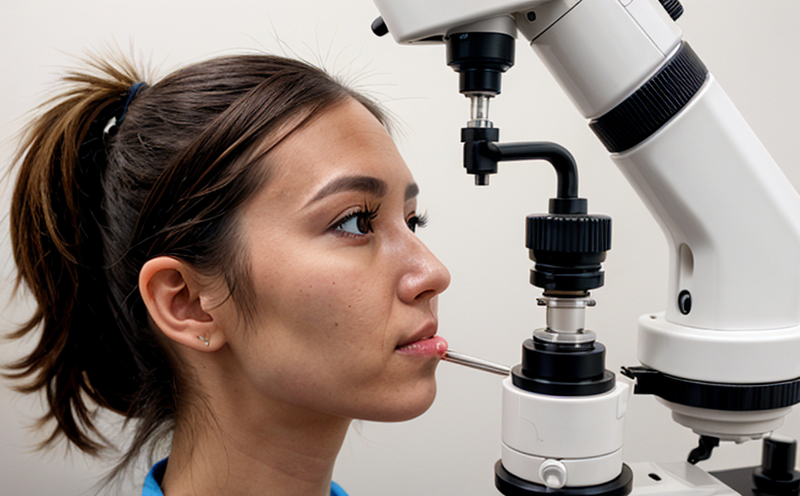ISO 11979-14 Optical Bench Testing for IOLs
The International Organization for Standardization (ISO) has established a series of standards to ensure the quality, safety, and performance of medical devices. One such standard is ISO 11979-14, which specifies the optical bench test method for intraocular lenses (IOLs). This procedure evaluates the optical properties of IOLs under controlled conditions, ensuring they meet stringent requirements for patient safety and efficacy.
The optical bench testing procedure involves placing an IOL onto a precise positioning system where it is subjected to various light sources. The testing apparatus measures how light passes through or around the lens, analyzing its refractive index, dispersion, and other optical characteristics. This method is crucial because it helps identify any imperfections that could affect visual outcomes for patients.
The test parameters are meticulously defined in ISO 11979-14 to ensure consistency across laboratories worldwide. The specimen preparation process includes cleaning the IOLs thoroughly before placing them on the optical bench, ensuring no contaminants interfere with the measurements. Calibration of all instruments involved is a critical step to maintain accuracy.
The results generated from this testing are used by manufacturers and regulatory bodies alike to verify compliance with international standards. Compliance ensures that medical devices like IOLs are safe for clinical use and provide reliable performance in diverse lighting conditions encountered by patients.
Understanding the intricacies of ISO 11979-14 is essential for those involved in the development, manufacturing, and regulatory submission processes of ophthalmic devices. This knowledge helps stakeholders make informed decisions about product design improvements and quality control measures.
The optical bench test not only aids in product development but also plays a vital role during clinical trials by providing data on how IOLs perform under controlled laboratory conditions before being used in human subjects. By adhering to these standards, manufacturers can enhance patient safety while reducing the risk of adverse events related to device performance.
Why It Matters
The importance of ISO 11979-14 cannot be overstated when it comes to ensuring the quality and safety of intraocular lenses (IOLs). Compliance with this standard ensures that manufacturers produce devices that meet strict optical performance criteria, thereby enhancing patient outcomes.
- Ensures consistent optical properties across different IOL models
- Reduces the risk of post-surgical complications due to poor device quality
- Simplifies regulatory compliance by aligning with international standards
- Improves product reliability and longevity in diverse clinical settings
In summary, ISO 11979-14 is fundamental for maintaining high-quality IOLs that contribute to better patient care.
Why Choose This Test
- Comprehensive Evaluation: The optical bench test provides a thorough assessment of the optical properties of IOLs, ensuring they meet stringent performance criteria.
- International Recognition: Compliance with ISO 11979-14 is globally accepted, enhancing credibility and trust in your products.
- Enhanced Patient Safety: By identifying potential issues early in the development process, this test helps prevent adverse events post-surgery.
- Regulatory Compliance: This method ensures that manufacturers adhere to international standards, simplifying the regulatory submission process.
Selecting ISO 11979-14 optical bench testing demonstrates a commitment to excellence in medical device manufacturing. It positions your company at the forefront of innovation and patient care.
Quality and Reliability Assurance
Ensuring the quality and reliability of intraocular lenses (IOLs) is paramount for maintaining patient safety and satisfaction. ISO 11979-14 optical bench testing plays a crucial role in this process by providing robust methods to evaluate IOL performance.
- Calibration: Ensuring all equipment used in the test is calibrated accurately helps maintain consistent results.
- Data Integrity: Proper data management and documentation ensure that all testing processes are transparent and verifiable.
The optical bench test not only evaluates individual IOLs but also provides insights into batch consistency, which is vital for large-scale production environments. By incorporating ISO 11979-14 standards into their quality control protocols, manufacturers can significantly enhance the reliability of their products.
Regular audits and internal reviews further reinforce these practices, ensuring continuous improvement in manufacturing processes. This commitment to excellence ultimately translates into safer, more effective IOLs for patients worldwide.





